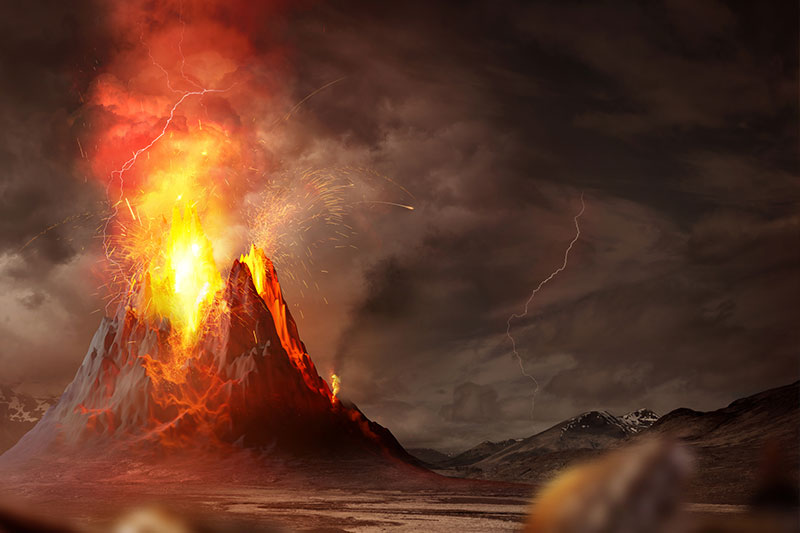Hawaii’s Kilauea volcano first started spewing lava into residential areas several weeks ago. In that time, the discharged lava has obliterated entire acres worth of real estate on the Big Island. Dozens of homes and businesses have been damaged or destroyed, and now at least one person has been injured by the lava.
Hawaii’s government officials are now afraid that the lava could damage more than just homes and businesses. It’s now looking like Kilauea might destroy one of Hawaii’s geothermal power plants. But perhaps more importantly:
The lava is scaring off the tourists.
On Monday evening, the Hawaii County Civil Defense agency made a grim announcement. They announced that lava had already begun to approach the southern edge of the Puna Geothermal Venture. And the Puna geothermal plant represents a pretty sizeable chunk of Hawaii’s total energy output.
The geothermal plant is driven by the hot liquid and steam that comes up from underground wells. The clouds of steam then drive turbines which generate electricity. It’s sort of the same concept behind a nuclear power plant, except the steam comes from the earth naturally instead of requiring nuclear fission to heat up the water.
Although losing this major source of power would be bad, it’s not the only potential issue at hand for Hawaiians. The lava flows could soon become more than the Hawaii County Civil Defense agency can handle.
“There’s a steam release, there’s many chemicals, but primarily the critical factor would be hydrogen sulfide, a very deadly gas,” explained Hawaii’s Emergency Management Agency head, Tom Travis.
“County, state, and federal partners have been collaborating closely to monitor the situation and work with PGV [Puna Geothermic Venture] to ensure the safety of the surrounding communities,” the civil defense agency said in its alert.
“Ten of the eleven wells have been quenched. Efforts are ongoing to make sure the site is secure and the community is kept safe.
Tom Travis further explained the process of “quenching” to reporters, saying that it involves “filling [the geothermic wells] full of cold water so that the weight of the cold water sitting in the pipe, the long pipe, is sufficient that instead of hot water entering the bottom of the well, cold water exits the bottom of the well.”
This quenching process follows up on the process of just shutting all the wells, which Tom Travis says already happened when Kilauea started to erupt. Additionally, work crews have been laboring overnight to quench the 11th well.
“Once that step is taken, we will be in a much more solid state for having lava overflow the site,” Travis added late Monday. “It’s not easy to predict where it’s going to go and when it’s going to get there. So it’s important that we get what we can done now.”
Aerial photographs taken at the site reveal a startling picture. The lava flow is only about the distance of a football-field away from the main body of the geothermal plant. By the time you are reading this, it may already have begun to flow into the plant.
Elsewhere on the Big Island, the lava flows have forced the closure of one the state’s main tourist attractions. About two-thirds of Hawaii’s Volcanoes National Park closed on May 11, right around the start of the tourism season. The park is still closed today. It’s estimated that the Volcanoes National Park sees about 2 million annual visitors.
A National Park Service report published last month suggested that last year those two million visitors spent about $166 million in the communities around the area. That money supported 2,020 jobs, and had a cumulative benefit to the local economy of $222,394,900.
Kilauea usually has some volcanic activity. That’s what makes it a draw for tourists. But since Kilauea’s activity has, shall we say, erupted in frequency, local businesses are seeing their income drop like one of the stones the volcano could soon begin spewing into the air.
And if the park doesn’t re-open soon, it may put some of these mom-and-pop operations out of business. Aside from all of the property damage in the area, and the potential loss of life, that would be a real tragedy too.























